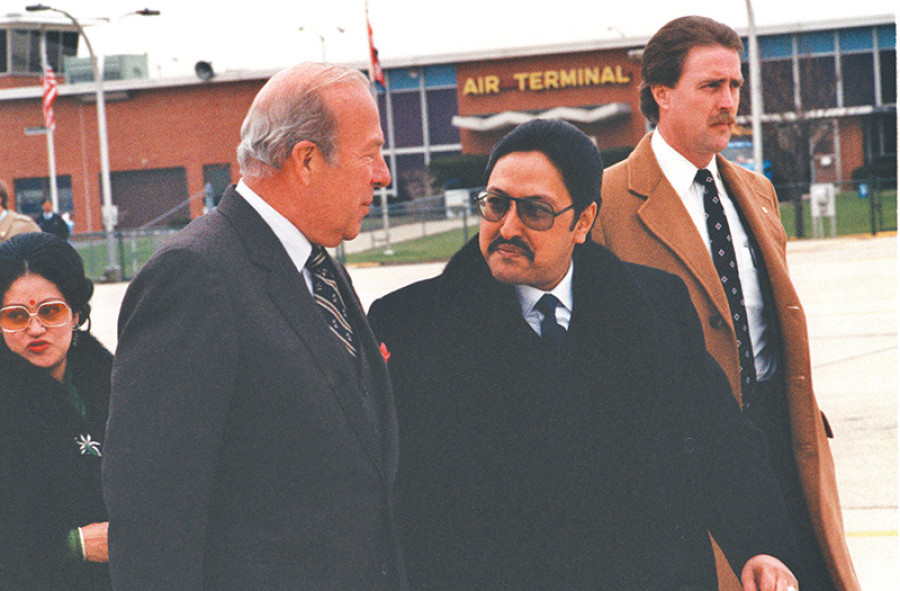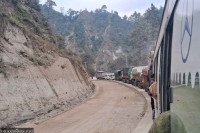Opinion
How prophetic was the CIA in its assessment about Nepal?
The US intelligence service’s assessments about Nepal have mostly been proven true
Amish Raj Mulmi
The day after Zulfikar Ali Bhutto was hanged by the Zia government on 4th April 1979, the New York Times reported that Pakistani officials were bracing for protests. Little did the Times know that Bhutto’s execution would snowball into a series of protests in another country nearly 2,000 km away, and lead Nepal into a (now discredited) referendum on the Panchayat system, and eventually pave the way for the larger protests of 1990.
Rishikesh Shaha writes that the first wave of protests that year took place on 6 April. A minor clash erupted outside the Pakistani embassy between the police and students protesting the hanging of Bhutto, which eventually snowballed into multiple protests and a closure of Kathmandu colleges between 13-21 April. On 23rd April, students gathered at Amrit Science Campus ‘to air their grievances against the excesses perpetrated by Rastravadi Swatantra Vidyarthi Mandal (National Independent Students\' Union) as the government\'s storm troopers.’ The police ‘brutally assaulted’ the students, with ‘unconfirmed reports of two or three deaths’. Colleges were closed indefinitely; in Hetauda, the police killed several protesters (between three to 17) on 27 April, and the government began to arrest several political leaders the next day. ‘After Hetaura (sic), the agitation spread like wildfire.
It caught on and went apace at Bhaktapur and Patan...at Bharatpur, Birganj, Kalaiya, Janakpur, Biratnagar, Rajbiraj, Siraha and Sarlahi in the Tarai and at Pokhara and Syangja.’ Deliberations took place on the students’ demands, but on 23rd May, a meeting of student protesters in Kathmandu grew quickly into a mass movement and burnt down several Royal Nepal Airlines vehicles and government newspaper offices. The police were hopelessly outnumbered, and the army was called in. ‘A total of five rioters were wounded and forty policemen were injured, one of whom died a week later.’ The next day, King Birendra announced the referendum.
Prescient warnings
As I discussed in my previous column, the American Central Intelligence Agency (CIA)’s coverage of Nepal focused on issues as enigmatic as unidentified flying objects. With such a wide mandate, it will come as no surprise that the CIA regularly issued assessments of political developments in the country as briefing notes for policymakers back in Washington. Two such assessments are the focus of this week’s column, one written a month after the protests, and the other four years later. Together, these two assessments outlined the political fissures that were evident in Nepal then, some presciently, and give us a different perspective on the turbulent years between 1979-1983, which would lead into the protests for democratic multi-party politics towards the end of that decade.
The first assessment was written in June 1979, a month after the protests. Titled ‘Turmoil in the Himalayas’, it called the Panchayat system a ‘rubber stamp’. Although the Bhutto hanging provided an outlet for students who had been stifled under the repressive and illiberal regime, the protests had been in the making ‘since late last year’, December 1978, when a corruption scandal erupted. The execution of two Nepali Congress activists convicted on charges of treason and terrorism—the first in over 15 years—was met with further protests, and when BP Koirala returned to Nepal after treatment in the US in March 1979, pro-government supporters encouraged demonstrations against BP, during which several Congress members were injured.
With simmering discontent, it was no wonder protests against an executed Pakistani prime minister turned into an expression of demonstration and confrontation with the royalist Panchayat government. After Birendra announced the referendum, it noted that his ‘concessions’ defused the crisis at that point, but ‘whether the stabilisation is permanent or temporary’ would depend on the king’s willingness to conduct an ‘impartial referendum’.
The assessment suggested ‘most members of the royal entourage’ were not in favour of reforms, and ‘Birendra himself may be one of the most insistent voices arguing for moderation and reform’. And while the CIA noted it may be tempting to see parallels between Nepal and the situation in Iran before the overthrow of the Shah, the Nepali king ‘is not despised by his opponents’ who saw him as a ‘unifying figure’, and that ‘there is no large foreign presence...upon which popular discontent can center.’
Turning the tide
In its outlook, the agency thought that a fairly held referendum would probably be ‘overwhelmingly’ in favour of multi-party politics. But we can now say with reasonable certainty that the 1980 referendum wasn’t fair. Shaha wrote, ‘The referendum was not carried out in an atmosphere of impartiality... Limited publicity was given in official newspapers to the views of advocates of the restoration of the party system, and the government-controlled radio did not give any time whatsoever to [their] views.’ In another essay, he wrote young voters between the ages of 18-21, whose demonstrations had called for the referendum, were debarred by electoral law from voting. Subsequent to the Panchayat’s thin majority, political parties refused to participate in the 1981 National Panchayat elections, a ‘serious miscalculation’ according to the CIA. Despite the king amending the constitution for a few token reforms in 1980, the changes were ‘cosmetic—a reflection, in our view, of the king’s ambivalence towards delegating any real authority.’
In November 1983, the CIA published another report titled ‘Continuity and Change in a Himalayan Monarchy’, which sought to analyse the developments since the 1979 protests, and the monarchy’s central role in providing short-term stability by the aforementioned reforms. ‘[Birendra’s] modest liberalization program has almost certainly bought time for the monarchy...In releasing some pressures for change, he has unleashed unprecedented social and political forces that he may neither understand nor be willing to accommodate,’ the assessment concluded.
The CIA viewed the Shah monarchy during the Cold War as it did other monarchies in the region—a centralised political institution at the helm of affairs, ruling an underdeveloped economy where the struggles between modernity and traditionalism were being played out, and supported by the military. King Birendra was seen as a moderate among palace hardliners who dithered between ‘repression and concessions’ during the 1979 protests. His ‘Western education’ gave him a ‘more liberal outlook’, and the 1980 referendum allowed him to provide ‘some representative local government without diluting royal authority’. The CIA thought the institution was particularly vulnerable on the issue of corruption, even if the king himself ‘is generally regarded as honest’. The report also noted the king was aware of the corruption within the palace, but according to ‘trustworthy observers’, his inability to crack down on his family left him ‘deeply frustrated’. But because progressive forces were mostly directionless and divided, the feudal elite could react to demonstrations against it by centralising more power.
Spot on
The 1983 report also played out the most intriguing scenario in the event of royal succession. ‘A family history of heart trouble coupled with the King’s tendencies towards obesity and heavy drinking, increase the risk that the 37-year-old Birendra could die relatively young.’ In such an event, the CIA noted, there would be ‘no insurmountable succession problems’. With Crown Prince Dipendra then 12, Prince Gyanendra and Queen Aishwarya would ‘probably share control as regents, at least initially’. Both were regarded as hardliners who would stifle the reforms and ‘reassert royal authority’. However, if there was a power struggle, the agency believed Gyanendra would seize royal power. In a foreshadowing of the events during King Gyanendra’s rule, the report concluded, ‘A formidable figure in the palace power structure, according to Embassy [redacted], Gyanendra has a greater ability to command, strike hard deals and reward personal loyalty than the king. We believe he would relish the royal role.’ Two decades later, the analysis would be spot on.
The CIA’s long view of Nepal in the report was equally prescient. ‘Failure to integrate the Tarai into the national mainstream could seriously jeopardize Nepal’s political and economic future, yet [redacted] governing elements in Kathmandu are not interested in righting the balance... Nepal must also begin to deal constructively with a growing political awareness among ethnic groups traditionally outside the power system but now seeking access to power… Attempts by elite communities to stifle rural aspirations would undermine national unity and lead to widespread unrest.’
Reading these archival documents in the present is an illuminating exercise and a reflection on the moments that were lost due to royal rule and the sycophantic cult that surrounded it. Only with the benefit of hindsight can we identify the monarchy’s intransigence, especially when a few voices today continue to advocate for its return.
Mulmi tweets @amish973.




 17.67°C Kathmandu
17.67°C Kathmandu












